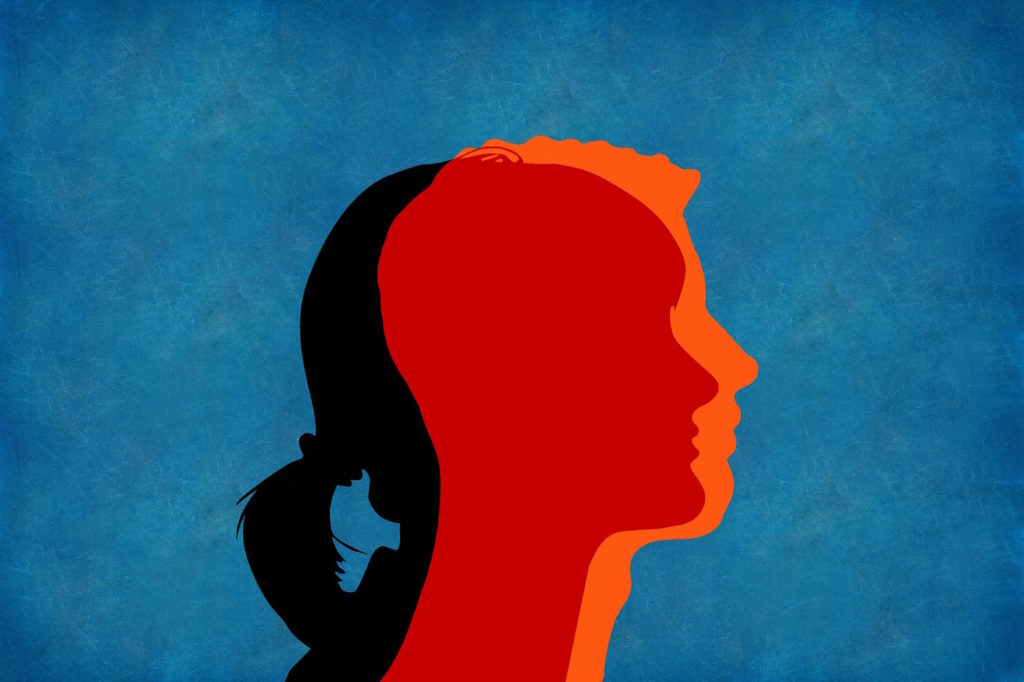The Equality Act (H.R.2282, S.1006) proposes to redefine sex across all federal laws and add “gender identity” to the Civil Rights Act of 1964 as a prohibited category of discrimination in public spaces. Assuming House Speaker Nancy Pelosi keeps her promise, the Equality Act will soon be voted on in the House of Representatives. If it were to pass there, and were ever passed in the Senate and signed into law, it would cause great harm.
“Gender identity” is a term that refers to how people choose to identify themselves based on their feelings. There is no test to determine one’s gender identity; it is simply asserted. Novel gender identities, such as “transgender” or “nonbinary,” have become shockingly common, especially among young people. Unlike protected classes such as race and sex, “gender identity” has no basis in material reality. There is no science to prove its existence. Yet a rapidly increasing number of states and municipalities have passed laws to prohibit discrimination on the basis of one’s self-asserted, subjective, unprovable “gender identity.”
While laws protecting “gender identity” sound fair and may be well-intentioned, the unintended harms that they cause are quite serious. As the mother of a transgender-identifying teen, my concerns are personal.
All people should be protected from harassment and harm, no matter how they identify. But we as a society must be allowed to reasonably act on the basis of sex when medical treatment, privacy, and safety are at stake. Recognizing and considering important biological sex differences in these instances is absolutely vital.
Start your day with Public Discourse
Sign up and get our daily essays sent straight to your inbox.What could be wrong with a law that promises “equality”? What possible injuries could result from banning discriminatory practices? While these laws may initially seem innocuous, the harmful consequences of ignoring the reality of sex differences have been evidenced in states and countries where “gender identity” laws and policies already affect children, healthcare, and sex-specific spaces. Children and women have suffered the most.
This is not equality.
Gender Identity Laws Harm Children
The number of people throughout the western world seeking to medically alter their bodies to conform with their “gender identities” has grown, with the most dramatic increases reported among teen girls and young women. In less than a decade, the number of girls seeking treatment in the UK rose by more than 4,000 percent, prompting a government investigation.
Growing evidence shows that many of these new identities among young people are the result of social contagion, social media influences, and/or underlying comorbidities, including Autism Spectrum Disorder.
Some kids learn of these identities at school. An increasing number of districts require that students be taught that their sex was “assigned” to them at birth, but they alone decide their “gender identity.” Once students adopt a new “gender identity,” many schools will change their names and pronouns without notifying their parents. Teachers who refuse to comply with these ideologically based mandates are at risk of losing their jobs. The Board of Education in New Jersey has gone so far as to actively encourage teachers and administrators to report parents who question their children’s new “gender identities.”
Other children have learned about “gender identities” on the internet, where YouTube videos glamorize young women with mastectomies and Instagram is filled with pictures of kids posing with hormones. When parents try to understand the reason for their children’s new identity, or try to get help for their child, it is nearly impossible. Therapists are trained to affirm and ignore signs of social contagion or underlying issues like autism. Enshrining “gender identity” into federal law will make getting proper help for children even more difficult.
Researchers have cautioned that young people with “gender dysphoria” present in the context of “wider identity confusion, severe psychopathology, and considerable challenges in the adolescent development.” Moreover, it is impossible for clinicians to predict whether young people’s “gender identities” will persist into adulthood. Yet the current treatment for this poorly understood and increasingly common phenomenon consists of puberty blockers and cross-sex hormones. Despite the bold assertions of some physicians and medical associations that this hormonal protocol is psychologically necessary, it is risky and experimental. Indeed, puberty blockers and hormones are known to cause serious side effects, including infertility.
Dr. Johanna Olson-Kennedy, the director of the largest pediatric gender clinic in the U.S., refers girls as young as thirteen years old for mastectomies, all on the basis of a self-proclaimed identity that cannot be objectively proven and is likely to change over time. Some clinicians use manipulative tactics to encourage parental compliance with medical treatment. Many stories of transition regret are emerging, but only time will tell the full extent of these medical harms.
The Equality Act specifically prohibits discrimination based on gender identity in any “establishment that provides health care.” Does this mean that therapists and physicians would risk lawsuits if they do not automatically affirm children’s “gender identities”? Would they be legally prohibited from exploring other causal factors? How would children receive proper therapeutic support to explore underlying reasons why they want to appear as the opposite sex if therapists are legally compelled to affirm them?
If “gender identity” becomes a federally protected class, will physicians be legally allowed to refuse to provide untested, risky hormone treatments to trans-identifying children? Or might they feel pressured simply to accept a child’s identity and prescribe questionable medical treatment just to avoid a potential lawsuit? How will physicians uphold their most sacred oath to “First, Do No Harm” when doing so will put them at risk of being sued?
Gender Identity Laws Harm Medical Patients
“Gender identity” laws harm all patients, not just young people seeking treatment for gender dysphoria. Biological sex differences are much deeper than obvious differences in genitalia; they include differences at the biochemical and cellular level, which have vital implications for medical research, disease tracking, proper medical diagnosis, and treatment. For example, receiving a blood transfusion from a previously pregnant female donor is associated with increased mortality among male recipients. How could male patients receive safe blood transfusions if healthcare workers must treat blood donors and recipients based on their changeable sense of “gender identity” rather than their immutable biological sex?
There are pronounced and important differences between men and women in their cardiovascular, musculoskeletal, and immune systems. For example, the symptoms and risks of cardiovascular disease, the leading cause of death, differ based on the patient’s biological sex.
When physicians make treatment recommendations, interpret lab results, or evaluate health risk profiles, they must be allowed to make reasonable decisions on the basis of sex. Hospitals must be permitted to identify patients by sex. Epidemiologists must be allowed to track disease trends by sex. But if “gender identity” supplants biological sex in healthcare considerations, all patients will be seriously affected; many will be harmed.
Gender Identity Laws Harm Women and Girls
If gender identity becomes a protected class, males who “identify” as women will have legal access to any women’s locker room, bathroom, shelter, prison, changing room, or sports team throughout the United States. Biological sex differences will be deemed irrelevant as gender identity becomes the determining criterion for inclusion. Schools and businesses will be forced to comply regardless of the legitimate privacy and safety concerns of women.
When women and girls use public showers, restrooms, or shelters, they rightly expect that they will not be ogled, harassed, or attacked by men. But if gender identity becomes a legally protected class, they will have no legal right to demand the absence of men when they are in various states of undress. Evidence from the UK, where the number of unisex facilities is increasing, shows they have become a magnet for sexual offenders. In some states where bathroom access is determined on the basis of “gender identity,” sexual assaults have already been reported; one alleged victim was only five years old.
Homeless, battered, and sexually abused women who seek refuge in shelters will be legally forced to share this space with men. Where “gender identity” laws are already in full effect, women’s shelters have been forced to open their doors to biological men with disastrous results. In California, a man who identified as a woman sexually harassed nine homeless women at a shelter while they were naked in the shower. Another man claiming to be a transgender woman sexually assaulted his victims in two Canadian women’s shelters.
Female students will be forced to share dorm rooms with males based on “gender identity,” a policy that has already been adopted at numerous colleges. Many schools described as “women-only” are beginning to accept transgender-identifying males. All-female sports teams and athletic contests will be forced to include males based on their self-proclaimed identities, as they have in states like Minnesota, essentially denying female athletes a fair chance of winning due to men’s undeniable physiological advantages. Women’s safety will be jeopardized when playing contact sports.
If “gender identity” becomes a protected class, nearly all sex-based protected public spaces will disappear. Women and girls will certainly suffer the harms.
I urge everyone to speak out and implore lawmakers to consider critically the impact of including “gender identity” in the Equality Act. We must act before more people are harmed by this ideologically driven “gender identity” movement. We don’t need any more victims. My daughter is already one too many.













